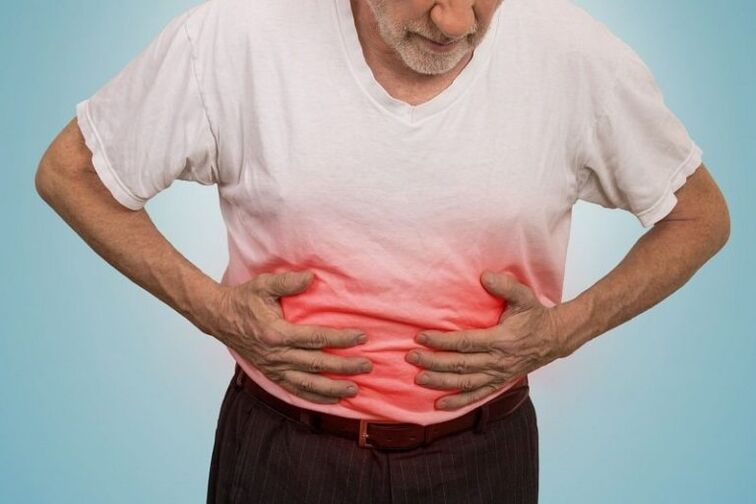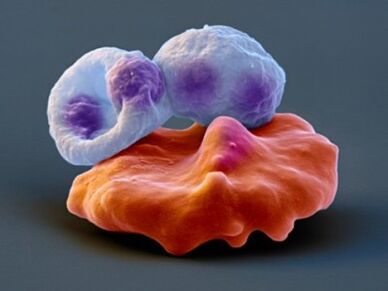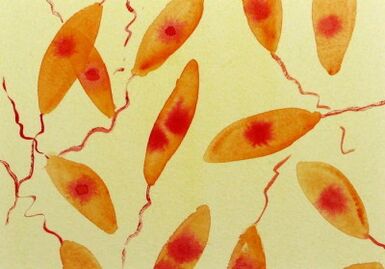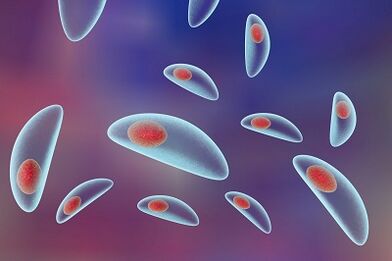
The simplest parasite is an organism that is adapted to invade and live in the cells and tissues of other organisms. The simplest parasites cannot live alone in an open environment like other protozoa, but must invade the body of another organism for protection and nutrition.
The simplest parasites and their variants
The simplest organisms are eukaryotic systems, which exist in the form of structurally and functionally independent single cells (including species that live in groups or form groups). Protozoans have developed relatively complex subcellular features (membranes and organelles) that enable them to survive in harsh environmental conditions. Most protozoa are microscopic organisms, and only a few protozoa grow to the naked eye. As single-celled eukaryotes, they move around to survive, eat and reproduce.
Some of the simplest parasites can cause problems. They exist in our food, soil and water. If they enter our body, they will make us very sick.
Every different kind of protozoan parasite can cause different diseases in our body. Some of them cause serious diseases of the respiratory tract (the air passage from the nose to the lungs) and central nervous system (brain, cranial nerves, and spinal cord), while others live in the intestines, causing symptoms such as diarrhea, and are not fatal.

There are four types of protozoan parasites, which are classified according to how they move:
- Sarcodes are a group of amoeba that use pseudopodia and contraction to move, thereby changing the shape of their cells;
- Flagella move with the help of flagella;
- Diatoms use cilia;
- The spore worm is immobile in the mature stage.
The life cycle of protozoan parasites
Most protozoa have great reproductive potential because they have a short generation time, undergo rapid continuous development, and produce a large number of offspring through asexual or sexual. These characteristics lead to many of the simplest infections and quickly cause the acute symptoms of the disease.
The developmental stages of protozoan parasites that occur in the host are usually composed of feeding trophozoites, which can be found inside the cell (in the host cell) or outside the cell (hollow organs, body fluids, or internodes between cells). Although trophozoites are an ideal way of parasitism, they are not very resistant to external environmental conditions and cannot survive for a long time outside the host. To move between hosts, protozoan parasites use one of four main modes of transmission: direct transmission, fecal-oral transmission, transmissible, and from predator to prey.
How protozoan parasites spread to humans
- Direct transmission of parasites through close contact with the body-sexual transmission (for example, Trichomonas, which causes human trichomoniasis, is a fungus).
- Stool-oral transmission in the stable stage of cysts-parasites are transmitted through food or water through the feces of one host to another host (for example, Entamoeba histolytica, Giardia duodenum, and large intestine worms are all causedAmoebic dysentery, giardiasis and balanosis).
- When the parasites are ingested by blood-sucking arthropods (insects or arachnids) and transmitted to new hosts through bites (such as Trypanosoma brucei, which is transmitted by the tsetse fly and causes sleeping sickness, and Plasmodium hemosporidium, caused byWhen mosquitoes spread), it spreads and causes malaria).
- When the simplest parasite gets stuck in the tissues of the victim (for example, cows, goats, pigs) and is eaten by the predator (in our case, a human), the predator-to-preyspread.
The simplest human parasites and the diseases they cause
Acanthamoeba. This parasite infects human eyes or brain and causes exogenous amebiasis. He can live in any part of the world. People get it when they wash contact lenses with tap water.
Babesia. It can infect red blood cells and cause a disease called Babesia. Different types of parasites live in different parts of the world. It is transmitted by ticks when bitten.

Balantidium (Balantidium Escherichia coli). Parasitic on the intestinal mucosa, causing ciliary dysentery, also known as balanosis.
Blastocystis (Blastocystis). This parasite infects the host's intestines. It enters humans by ingesting food contaminated by human or animal feces. The disease caused by this parasite is called blastocyst disease.
Cryptosporidium (Cryptosporidium). Lives in the human intestine. Distributed all over the world. It enters the human body by ingesting food contaminated by human or animal feces.

Dysentery amoeba (Entamoeba histolytica). This simplest parasite can cause intestinal amebiasis. It is most common in areas with high population density and poor sanitation and tropical areas. It is spread through the fecal-oral route.
Giardia. Live in the cavity of the small intestine. If people eat food or water contaminated with feces, dormant Giardia cysts can infect the body and cause intestinal giardiasis. This is especially dangerous for children and requires mandatory compliance with treatment protocols.
Isospore (Isospora belli). Affects the epithelial cells of the small intestine. Distributed all over the world. It is transmitted through the fecal-oral route and is a pathogen of isospora.
Leishmania. Parasitic on human skin and internal organs. It exists all over the world in various forms. It is transmitted after being bitten by certain types of mosquitoes.

Negria (Naegleria fowleri). Causes primary amoebic meningoencephalitis because it exists in the human brain. Infections occur through contaminated soil, swimming pools, and contaminated water.
Plasmodium (Plasmodium falciparum, Plasmodium vivax, Plasmodium ovale, Plasmodium malaria). The parasite enters red blood cells and causes malaria. They are found in tropical areas that carry Anopheles (also called Anopheles).
Rhinosporidium. It reproduces in the nose and nasopharynx and grows there in the form of spores. It exists in India and Sri Lanka. People who swim in public waters may be infected with this parasite when the nasal mucosa comes in contact with contaminated materials.

Toxoplasma gondii (Toxoplasma gondii). Affects the liver, heart, eyes and brain. A parasite that spreads all over the world. People can get infected after eating raw or undercooked pork, lamb, goat or milk. Due to cat feces, it may also be present in contaminated food or soil. The disease caused by this parasite is called toxoplasmosis or parasitic pneumonia.
Trichomonas (Trichomonas vaginalis). It infects the female genitourinary tract. The symptoms are different for men and women. It is the causative agent of trichomoniasis (a sexually transmitted infection).

Trypanosoma (Trypanosoma brucei, Trypanosoma cruzi). The first parasite affects the central nervous system, blood and lymph. It is spread by tsetse flies and causes so-called sleeping sickness. The second parasite causes Chagas disease by affecting the blood, muscles, nerves, heart, esophagus and intestines. It can also be spread by insect bites.
How to treat human infections caused by protozoan parasites?
The treatment plan for protozoan parasite infections will depend on the specific diagnosis. Usually, your doctor will prescribe some medications, such as treatment for trichomoniasis, giardiasis, or cryptosporidiosis. Under normal circumstances, toxoplasmosis is not prescribed unless there is pregnancy, other diseases, or serious and long-term infections.
The doctor may also recommend other treatments to help relieve symptoms. For example, many parasitic infections can cause diarrhea, which usually leads to dehydration. Therefore, when treating infections caused by protozoan parasites, it is usually recommended to drink plenty of water to compensate for the loss in the body.
How to prevent protozoan parasites?
There are several steps you can take to reduce the risk of infection with parasites:
- Use condoms for safe sex;
- Wash your hands frequently, especially after handling raw food or feces;
- Cook the food to the recommended core temperature.
- Drink clean water when traveling, including bottled water;
- Avoid swallowing water from lakes, streams or ponds;
- Avoid cat litter and feces during pregnancy.
If you suspect that you have a parasite, please make an appointment with your doctor. They can help diagnose the cause of symptoms and recommend treatment plans. The sooner you start treatment, the more you can help stop the infection from spreading to others.



























